What are the best places to visit in North Italy?
Italy. Land of ancient beauty, romance, history, and of course food. Italy is a fantastic country, one that we have visited numerous times. There’s a lot to see (and eat).
A topic this massive needs to be tackled in pieces. Let’s start with places to visit in North Italy, shall we?
North Italy consists of eight separate regions, each offering a diverse landscape, culture, and gastronomy. From the vineyard-laden hills of Veneto to the jagged peaks of the Dolomites. From the terracotta streets of Bologna to the coastal villages of the Cinque Terre; northern Italy is filled with natural beauty, spectacular architecture, and artistic glory. Each city or region has something unique to offer visitors, whether you’re looking for a city break or a return to nature – north Italy is guaranteed to have something you’ll adore.
Table of Contents
Best Places to Visit in North Italy
It was a difficult task but we’ve compiled a list of the best places to visit in Italy’s northern region. Unfortunately, we had to cull a few from the list so that this article didn’t end up over 10,000 words. So, we know we missed some amazing places, maybe some of your very favorite places in Italy. Don’t take it personally!
For this article, we’ve kept central Italy separate, so that the southernmost destinations on the list are Bologna and the Cinque Terre.
We’ve got a lot to get through, so without further ado let’s get started! Or as the Italians would say: iniziamo!
Don’t forget to check out our article on the best places in Central and South Italy as well!
Venice
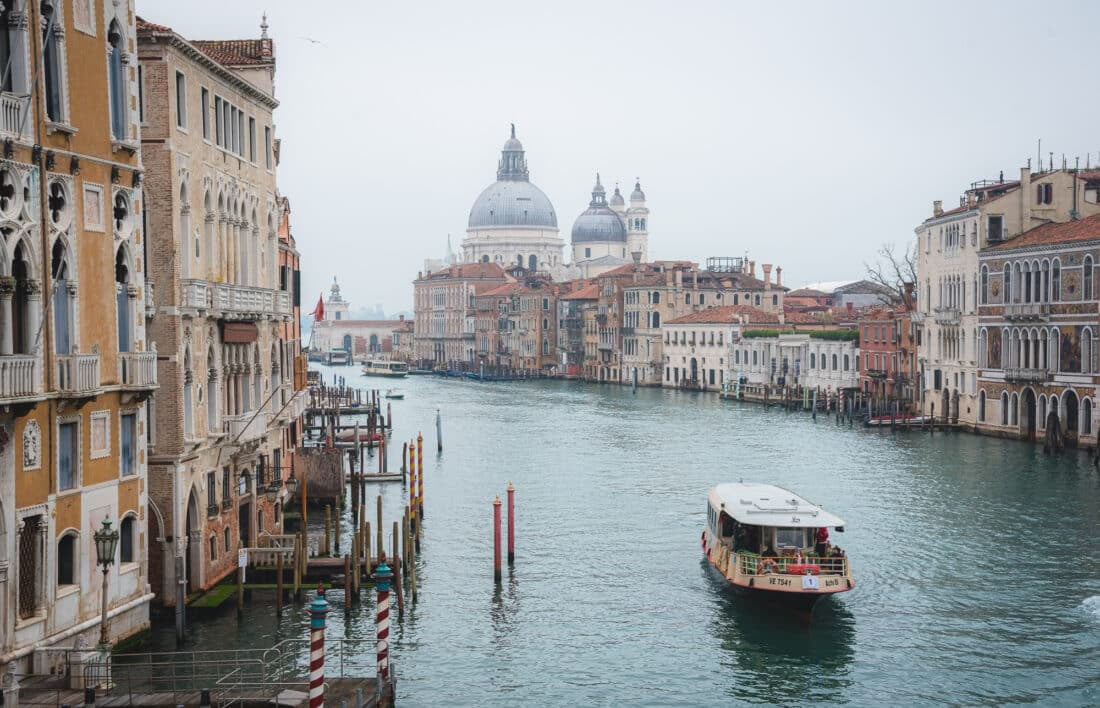
Venice, Venice, Venice. There’s truly nowhere else in the world quite like it. Literally – there isn’t.
The famous Venice is a unique floating city in the northern region of Veneto. Built over 100 small islands in a lagoon in the Adriatic Sea, Venice is completely void of roads and cars.
A trip to Venice is something that we think everyone should experience at least once in their life, and if things keep going the way they are – there might not be that much time left for the floating city. Scientists predict that Venice will be underwater by 2100 due to rising sea levels – which is devastating to hear about such a unique, historic, and culturally important place. We truly hope human ingenuity finds a way to preserve this city, as it is one of our very favorite cities in the world.
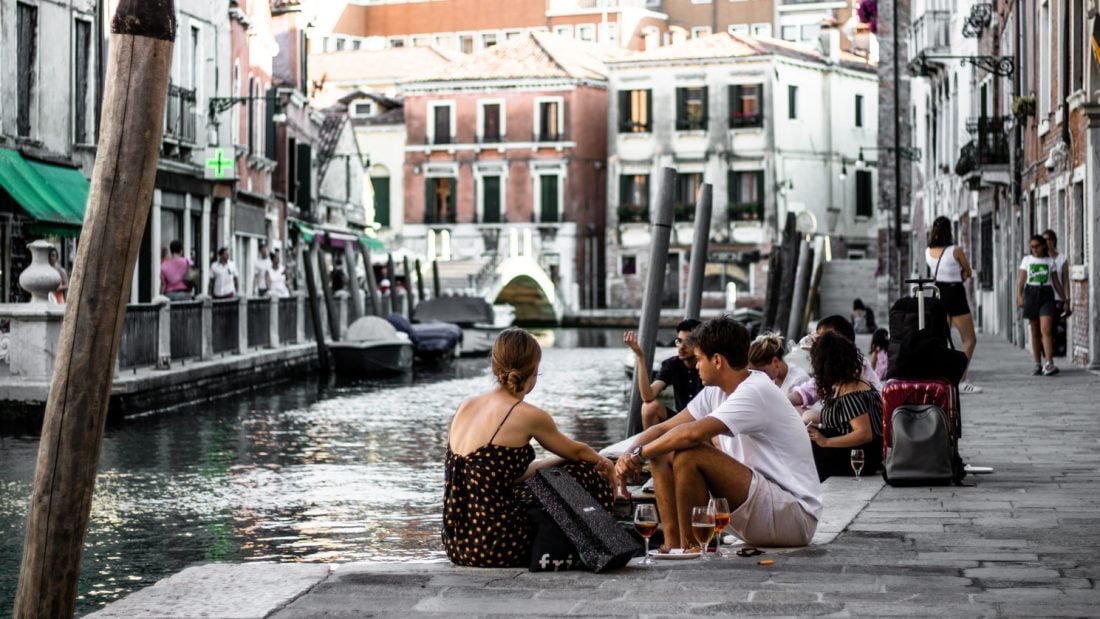
Anyway, back to the good stuff. No trip to Venice is complete without getting lost in the winding streets and discovering picture-perfect hidden canals along the way. Its pastel colors, floating gondolas, and ethereal ambiance will leave you feeling as though you’ve gone back in time a few hundred years.
Centuries of magnificent Venetian architecture are evidenced in the incredible Grand Canal, the Palazzo Ducale, and the Basilica di San Marco. From the moment you step out of the main train station, your jaw will be permanently dropped in awe of this magnificent city – and that’s just the start.
Sit back with an Aperol spritz in one of the piazzas and watch the fascinating mix of tourists, locals, and workers go about their lives. Discover Venice’s incredible art scene in galleries such as The Guggenheim, or marvel at works by great Venetian painters like Titian which hang in their original church locations. Chow down on some delicious cicheti (Venetian tapas) and get a taste of the local cuisine. Venice is one of those inspiring cities where you’ll walk out feeling slightly different than you came in, filled with that feeling of hazy amazement that you only get when you wake up from a dream.
If you’ve got enough time left then we highly recommend you visit some of the other islands in Venice. Burano is a magical island filled with brightly colored houses that have become somewhat of an Instagram sensation over the years. Neighboring Murano is famous for being the home of the glass-blowing tradition, and you can see glass-blowers at work as you stroll along the tranquil canals.
Plan your trip to Venice carefully, though. It might seem tempting to visit during the hot summer months – but Venice in summer is so full of tourists that it can feel almost claustrophobic. The stifling 40-degree heat probably doesn’t help either. Spring, autumn, or winter are much more pleasant times to visit.
Where to Stay in Venice – Hotel Bisanzio
Featuring a traditional Venetian style, the lavish rooms at Hotel Bisanzio don’t come cheap – but if you can afford to treat yourself then we highly recommend it. Located just 200 meters from Piazza San Marco, this Venice hotel provides comfortable rooms with Murano glass details, a delicious buffet breakfast every morning, and services for booking tours and activities in Venice.
Venice is a city all about elegance and luxury, so it’s only fitting that your hotel is too, right? No… okay, we understand – money doesn’t grow on trees, unfortunately – so for those of you on a budget we’ve compiled a list of the best hostels in Venice that are comfortable, clean, and affordable.
Cinque Terre
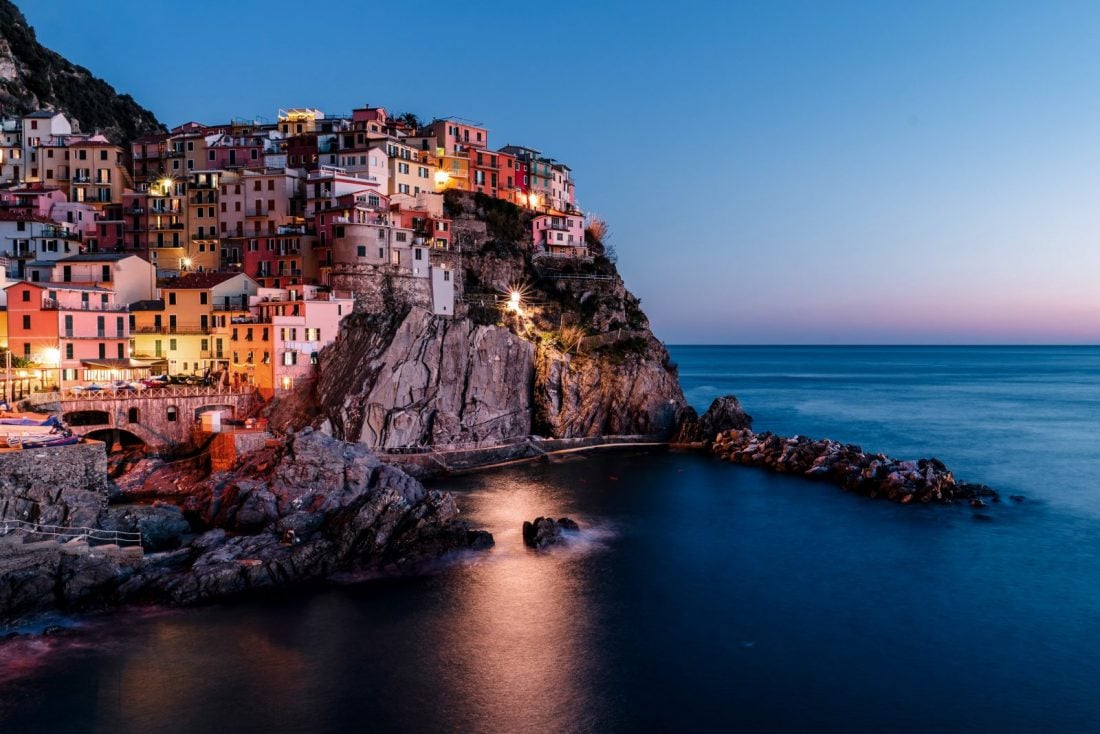
Listed as a UNESCO World Heritage Site in 1997 (where in Italy ISN’T a World Heritage Site these days?), Cinque Terre is a string of gorgeous seaside villages that run along the Italian Riviera coastline. Cinque Terre has become an icon all over the world due to its colorful houses, hillside vineyards, and tranquil bays. The stunning dichotomy of brightly colored human architecture clinging to the cliffs of the rugged coastline is truly a sight to behold.
And thus…
Nowadays, Cinque Terre is absolutely teeming with tourists – so they don’t have the same peaceful fishing village vibe that they once enjoyed. The ills of over-tourism aside this is still one of the best places in Italy. But you should probably limit your time here, and definitely try to leave as small a footprint as possible.
Cinque Terre is made up of five different villages, each offering something unique and special to visitors.
Riomaggiore offers the most iconic view of the region: its steep hillside village lit up in the evening. Manarola is surrounded by grapevines that produce the regional wine, Sciacchetrà, and boasts a busy waterfront promenade ideal for relaxing with a glass in hand.
Corniglia looks down from a steep 100m high promontory, here you can find a viewpoint that allows you to see all five villages of the Cinque Terre at once. Vernazza is a maze of winding streets and pastel houses that embodies a unique seaside village charm.
Lastly, there’s Monterosso which is the only village with a beach that is perfect for soaking up some rays during the summer.
Cinque Terre’s rugged coastline is also home to plenty of hiking trails that’ll provide you with panoramic views of the stunning coastline. If you need a breath of sea air then the Cinque Terre offers a uniquely atmospheric taste of fishing village life, and is without a doubt of the most picturesque place to visit in Italy.
Getting to Cinque Terre
Ah, here’s the hard part. Due to its location on a rocky coast – the roads around the area are narrow, windy, and downright terrifying. If you’re brave enough to try your hand at driving then it’s the best way to get around. A hiking trail connects all five villages, so bring your best walking shoes! La Spezia is the best way to reach Cinque Terre by train or bus.
Where to stay in Cinque Terre – Oasi Hotel
Situated just a five minutes walk from Levanto Beach and the center, Oasi Hotel is a great choice for travelers who want to sleep in style during their visit to Cinque Terre. Rooms are bright, spacious, and elegant. Each private room features a smart TV, modern design, and air-conditioning. Some rooms feature a balcony or direct garden access. From Levanto station, guests can explore all five cities of Cinque Terre easily. Friendly staff, comfortable rooms, and fantastic facilities make Oasi Hotel one of the best Cinque Terre hotels on offer.
Milan
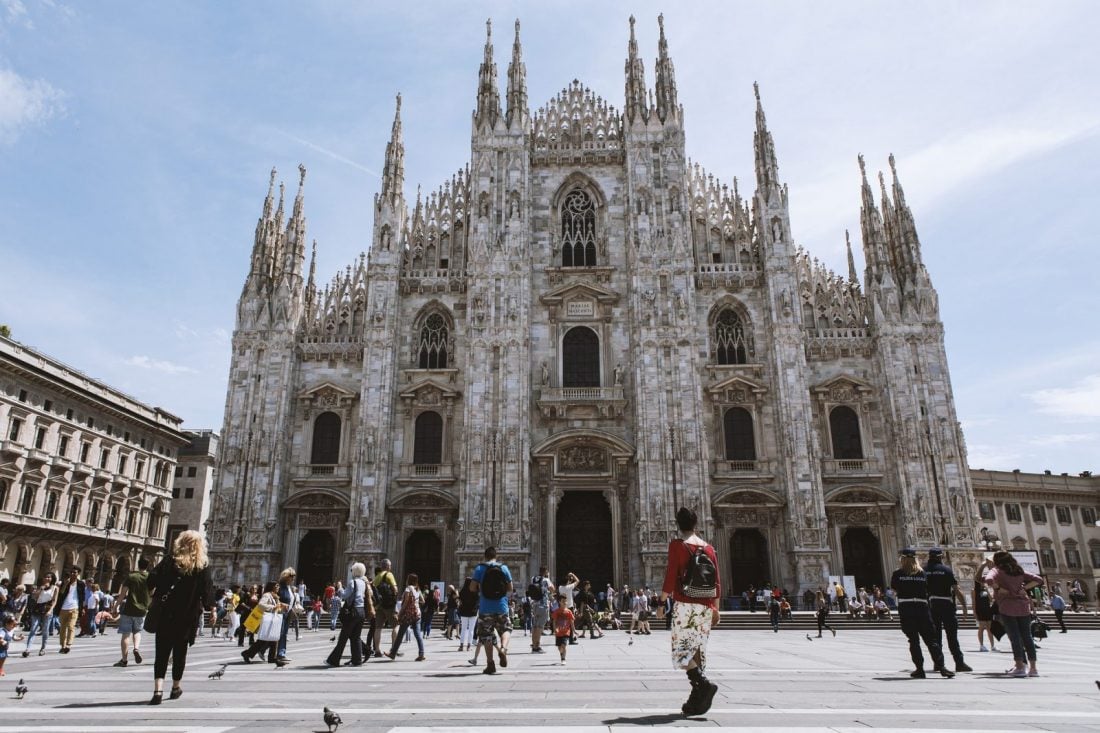
Italy’s sprawling cosmopolitan northern capital, Milan is a metropolis that leads Italy full charge ahead into the future. As the country’s fashion capital in Milan money talks. Home to businesses galore, numerous creative startups, and a vibrant and youthful population – Milan is a city on the move. Its status as a leading modern city doesn’t deter from its historical significance as a social, political, and cultural hub. Immerse yourself in contemporary art, a vibrant music and nightlife scene, and the cult of fashion that sets Milan apart as one of the best places to visit in Italy.
The heart of the city is its imposingly spectacular Duomo. Admire its grand facade and watch the children chasing the ever-present crowd of pigeons from below, or venture up to the roof where you can marvel at panoramic views of the city. In the refectory of Santa Maria delle Grazie lies one of the greatest works of art in existence: Leonardo da Vinci’s The Last Supper. Full of symbolism and showcasing some of the most advanced techniques in painting, it’s no wonder this is the reason many travelers venture to Milan in the first place.
Milan is also home to La Scala, one of the world’s most important theaters. Be sure to add a visit to Sforza castle to your Milan itinerary, and explore the grounds that the ruling Sforza family built during the Renaissance to protect themselves from attack.
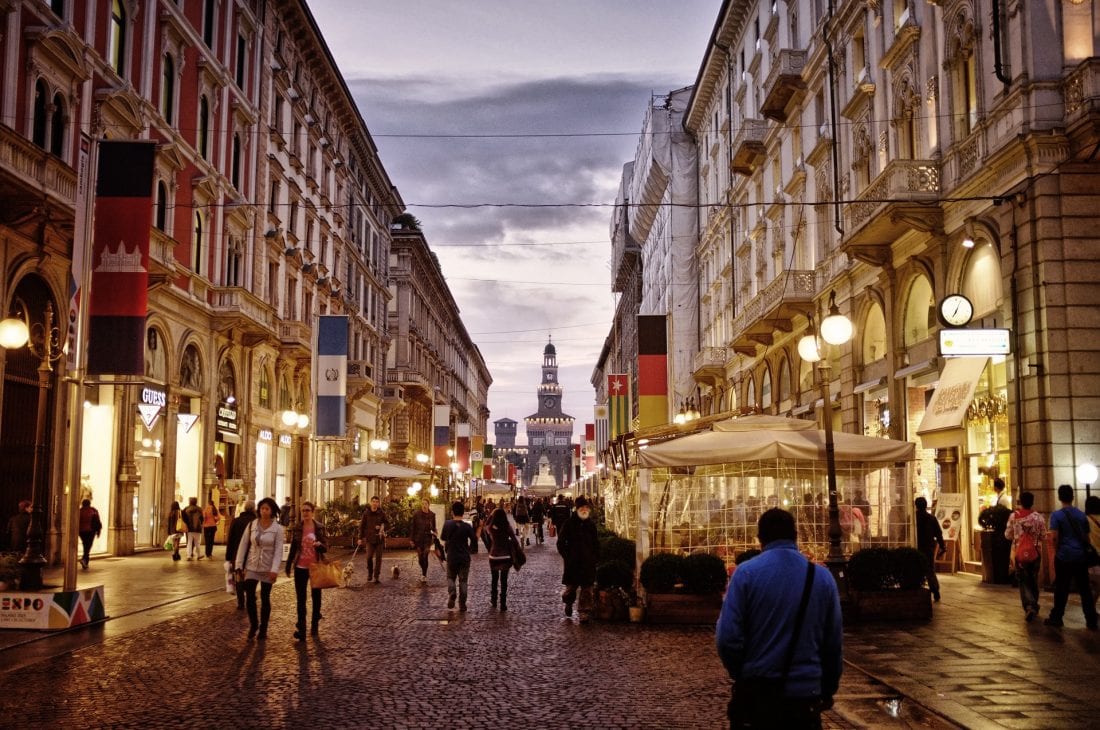
Once you’ve ticked off all the historic monuments, museums, and parks there are to see in Milan – it’s time to delve into its vibrant contemporary underworld. Immerse yourself in the atmosphere of Navigli at sunset, where crowds of people flock to dine and drink an aperitivo beside the grand canal. Appreciate Milan’s spectacular modern architecture, like the famous twin towers of the Bosco Verticale with its innovative design and Instagram-worthy exterior.
Milan’s international culinary field reflects its position as a cosmopolitan city, but there are some traditional dishes to be found among the sushi, dim-sum, Thai, and American-style cuisines. Cotoletta is a delicious dish of buttered veal, and saffron risotto offers an aromatic twist on the rice staple.
If you still don’t have enough on your Milan bucket list then have a read of our list of 35 awesome things to do in Milan for some more ideas.
Getting to Milan
Milan’s largest airport Malpensa connects flights all over the world. Getting to the city center from the airport is a breeze with the metro or bus. Milan’s central station connects to cities throughout Italy. Meanwhile within the city limits Milan’s metro is the best form of travel.
Where to stay in Milan – Ostello Bello Grande
Consistently highly rated, Ostello Bello Grande is located next to Milan central station and offers private and dormitory accommodation at reasonable prices. Rooms are modern with en-suite bathrooms and all the facilities you might expect from a top hotel – personal lockers, power outlets, and reading lights.
The 24-hour reception and bar mean that you have access around the clock, and guests are even offered a complimentary drink upon arrival! Guests can enjoy a breakfast buffet and FREE dinner buffet, which is a great way to meet fellow travelers to explore Milan with. There’s a fully equipped guest kitchen which also has a stock of free food for guests to use. Relax and socialize on the rooftop terrace which features comfortable hammocks and a barbecue. The hostel also hosts weekly events, so make sure to inquire about them at reception.
If you want to keep your options open then be sure to check out our list of the best places to stay in Milan, which includes hotel and apartments as well as hostels.
Valle d’Aosta (Aosta Valley)
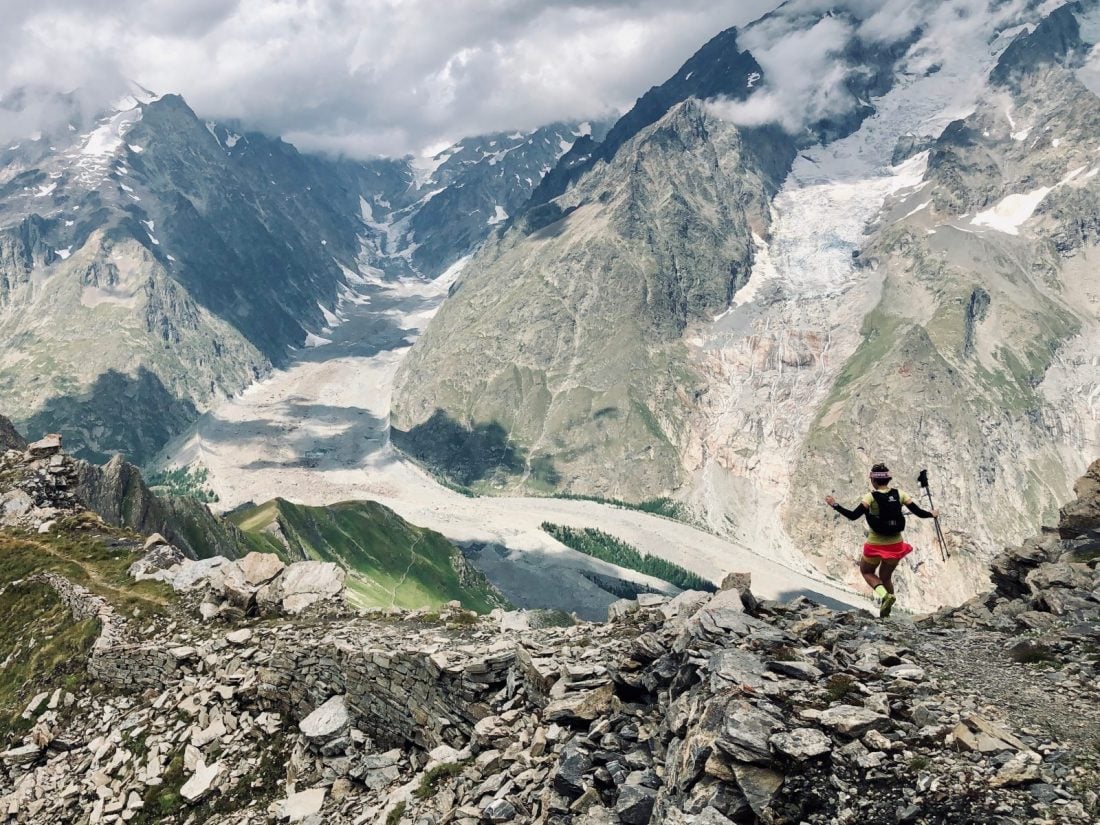
Valle d’Aosta is a small region situated where Italy borders France and Switzerland. Home to soaring mountain peaks, mystical national parks, and glimmering lakes, Val d’Aosta is one of the best places in Italy for nature lovers.
Valle d’Aosta’s geographical position puts it at the intersection of French and Italian culture – a unique combination that is reflected in every aspect of life in the region and has even yielded a hybrid culture unique to the area: Valdostan. This fascinating mingling of cultures can be seen in the region’s distinctive architecture, palatable cuisine, and melodic language that mixes aspects of both languages.
Nestled in the panoramic Western Alps, Valle d’Aosta is home to the iconic, snow-capped peaks of the Matterhorn, Mont Blanc, Monte Rosa, and the Gran Paradiso. Popular among skiers, hikers, and adventure enthusiasts, Valle d’Aosta provides the perfect natural canvas to get back in touch with nature. The rolling green hills and rugged mountainsides are teeming with unique wildlife (like the ibex, the symbol of the region), and punctuated with medieval castles and Roman ruins that tell the story of the valley’s fascinating past.
Get lost in the Gran Paradiso National Park (metaphorically, of course), embark on a canyoning adventure, or slip and slide down the powdery slopes of some of the Alps’ highest peaks. If you don’t exactly identify as an “adventurer” and would prefer to spend your mountain getaway taking in the scenery from a stationary position, then there are plenty of thermal baths, spa facilities, and wineries where you can relax and revitalize.
Getting to Val d’Aosta
Val d’Aosta is another of those regions best reached by car, as you’ll have more freedom to explore at your own pace. However, it is easy to get there via train to Piedmont. There’s also a bus service that connects points of interest throughout the region.
Where to stay in Valle d’Aosta – La Bicoque Hotel
In traditional alpine style, this cozy hotel offers private rooms with mountain views just 4km south of Aosta. Each comfortable room at La Bicoque features a private bathroom and a free breakfast is included in the price of your stay. Relax in the sauna and store your skiing equipment in the storage facility ready to go the next day.
The Dolomites

Italian cities are great, but there’s something special about Italy’s varied natural terrain and national parks. The Dolomites is a UNESCO World Heritage site that spans the regions of Trentino, Alto-Adige, and Veneto. Their jagged peaks and sublime natural parks offer plenty to do all year round for nature lovers.
In winter the Dolomites are awash with European visitors who come here to ski, as the region has well-organized ski routes and plenty of fabulous resorts. In the spring and summer months, the mountainsides turn green and the wildflowers bloom – and the crowds remain the same – but this time they’re composed of avid hikers, extreme sports fanatics, and those who just need a breath of fresh, mountain air. Explore the pristine forests, discover frozen waterfalls, and immerse yourself in the unique culture that this alpine region has to offer.
The Alto-Adige region combines Italian and German culture, which makes it a truly unique spot. The dual cultural influence is evident in the architecture, language, and cuisine of the region. Dotted with quaint alpine villages, wide meadows, and hillside churches – you’ll feel like you’ve jumped right into an Italian version of The Sound of Music.
There are an endless amount of things to do and places to visit in the Dolomites, but make sure that a visit to Tre Cime Tre Lavorendo is on your list. The stunning jagged peaks reflect the warm sun, turning them into a unique shade of pink. The Dolomites are larger than life, and the perfect part of northern Italy to immerse yourself in if you’ve had enough of the city.
If you’ve got enough time, we highly recommend a trip to the pristine Lago di Braies nestled in the heart of the Dolomites. You won’t have seen anything like it, it’s like one of those Instagram photos that you think someone must have spent hours editing. Only it’s not a photo, and it really does look like that. The lake attracts plenty of visitors, and the mountain backdrop paired with the wooden boats lazily bobbing up and down on its teal surface makes it one of the most idyllic spots in the whole of Italy.
Getting to the Dolomites
Best explored by car, the Dolomites aren’t the easiest part of Italy to navigate with public transport. However, there are trains that link bigger cities like Verona and Milan to the Alpine towns of Bolzano and Trento – from where you can try your luck with the local bus services to get around.
Where to Stay in the Dolomites – Parkhotel Laurin Hotel
Situated in the heart of the charming alpine town of Bolzano, just 200 meters from the Duomo, Parkhotel Laurin is a luxury accommodation option in the Dolomites. The hotel is surrounded by a stunning park that is perfect for relaxing in the pool or dining on a cool summer night. Rooms are stylishly decorated with wooden furniture and feature idyllic views of the surrounding mountains. Guests can indulge in regional and Italian cuisine at the on-site restaurant, or relax with a drink in hand in the bar.
Or why not REALLY connect with nature and opt to camp instead? The Dolomites are filled with camping sites with great facilities. Just make sure you bring plenty of warm clothes, the temperature drops substantially at night even in the summer months.
Bergamo
Nestled among the dusty hills between Milan and Lake Como, Bergamo is a charmingly quaint city that oozes history, culture, and character. Divided into the upper town, the Città Alta, and the lower, more modern Città Bassa, Bergamo’s rich history is reflected in its magnificent piazzas, grand churches, and the Venetian walls that surround the city.
If you’re exploring the north of Italy then Bergamo is a must-see. It’s referred to as the hidden gem of Lombardy, as it’s often glanced over when visitors plan their Italian itineraries. It’s also often one of the cheaper Italian airports to fly in and out of, so spending a day or two there as a stopover is a great idea. Admire the panoramic views of the city below from the Rocca Fortress, follow the path along the Venetian walls which encircle the historic Città Alta, and get lost in the winding Roman streets, stopping along the way to peer into the artisan shops and charming art galleries that line the cobbled paths.
If you decide to add Bergamo to your Italian itinerary (and we really think you should) then be sure to visit the imposing Basilica di Santa Maria, marvel at the incredibly detailed interior of Bergamo cathedral, and ride the scenic funicular to Rocca di San Vigilio where you can enjoy panoramic views of the city and surrounding hills. If you want to try some typical Lombardian cuisine, head to Il Circolino – a former prison become restaurant that has a wonderful ambiance and extremely palatable prices.
Getting to Bergamo
As we’ve mentioned, Bergamo has an airport where plenty of flights land daily – so if you’re flying straight in it’s simple to make your way to the city center by bus. Bergamo is also well connected to Milan with trains and buses leaving regularly from the lower town.
Where to Stay in Bergamo – Entro Le Mura B&B
Located 100 meters from Bergamo’s Piazza Vecchia, Entro Le Mura B&B is a charming B&B situated in a historic house with private gardens in the Citta Alta. This family-run B&B dates back to the 17th century and retains elements of its medieval design. The en-suite rooms are comfortable, clean, and affordable. Guests can enjoy a delicious breakfast in the garden, or keep warm in the frescoed lounge equipped with a fireplace in the winter.
Bologna
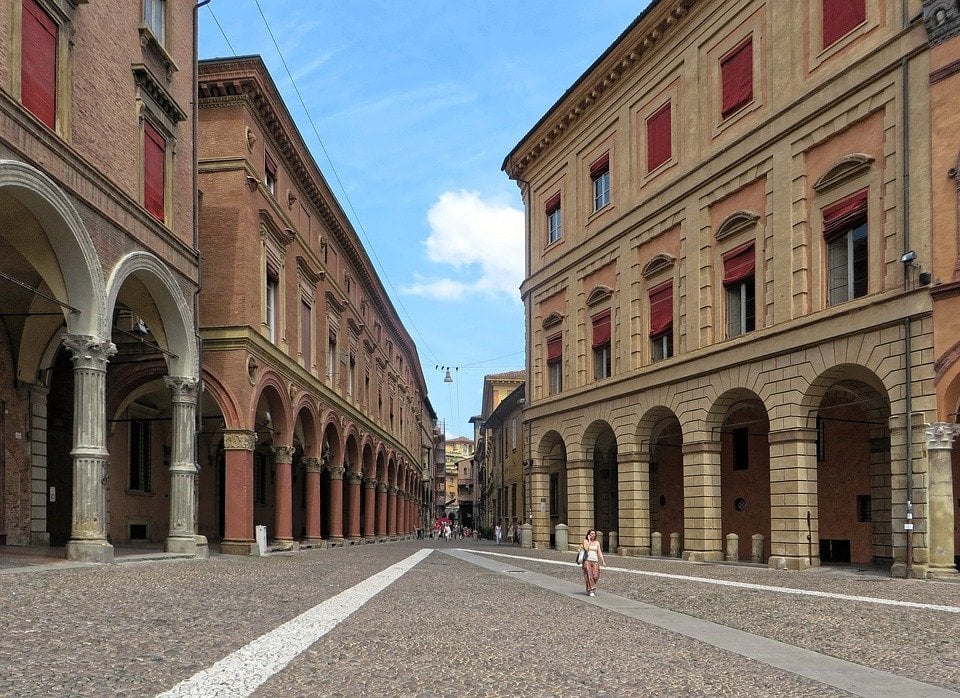
Brimming with history, culture, and food like nowhere else in the world, Bologna is a terracotta dreamscape. Characterized by its red-toned medieval buildings adorned with mile upon mile of porticoes, its left-swinging political history, and its graffiti-embossed piazzas – the capital of Emilia Romagna is one of the most culturally intoxicating and best places to visit in Italy and the world.
Bologna’s nicknames summarize the city pretty well. La Dotta (The Learned) for the reason that it’s home to Europe’s oldest university and attracts many an educated person; La Rossa (The Red) for its warm terracotta-hued buildings which are UNESCO protected; and La Grassa (The Fat) in a charmingly audacious nod to its unique gastronomy and standing as Italy’s foodie capital.
Bologna is often omitted from tourist itineraries, which in our opinion makes it all the more enjoyable! Unlike Florence, Venice, or Rome, when you visit Bologna you’ll be immersed in crowds of locals – rather than selfie stick armed tour groups with the infuriating propensity to meander along at a snail’s pace. We’re not bitter though. With a large student population, Bologna has a hip, youthful, and left-wing vibe that’s uncommon elsewhere in Italy. It also has fantastic nightlife where you can drink and dance until the sun comes up.
One of the best things about Bologna is how compact it is. You can walk everywhere without completely exhausting yourself, and there’s plenty to see in its relatively small center. Piazza Maggiore is the epicenter of political and social life in Bologna and provides many an opportunity for people watching and espresso-sipping.
Le Due Torri are probably Bologna’s most recognized monuments, and if you brave the 498-step climb to the summit of the Asinelli tower you’ll be greeted by unforgettable views and plenty of photo opportunities. Wander the 40km of gorgeous porticoes that wind through the city, and if you’re feeling adventurous follow the covered route all the way up to the Sanctuary of the Madonna di San Luca church – where you can gaze in awe at Bologna’s skyline below.
Don’t worry, we didn’t forget about the food. No trip to Bologna is complete without sampling the incredible range of regional dishes on offer. Some essential dishes we recommend are tagliatelle al ragu (bolognese), pumpkin tortellini with Parmesan, and tortellini with butter and sage. Flavorful and affordable, don’t be surprised if you add a few inches to your waistline during your visit to Bologna.
Getting to Bologna
Bologna’s central location means that it’s well-connected to most major Italian cities. Italy’s Frecciarossa super speedy train line connects Bologna to Florence, Rome, and Milan – with trains leaving regularly throughout the day.
Where to stay in Bologna – Dopa Hostel
Located in the heart of Bologna, Dopa Hostel is a fantastic accommodation choice for travelers who are on a budget but don’t want to miss out on a prime city location. Just a 10-minute walk from the Cathedral, Dopa Hostel offers capsule-style dorm rooms with city views, and prices include a delicious free breakfast! Each guest has a private locker, reading light, and a power outlet for keeping devices charged. There’s also a fully-equipped guest kitchen for preparing and storing food. Modern, comfortable, and affordable – Dopa Hostel is the ideal place to rest your weary head after a full day of exploring Bologna.
Lago di Como (Lake Como)
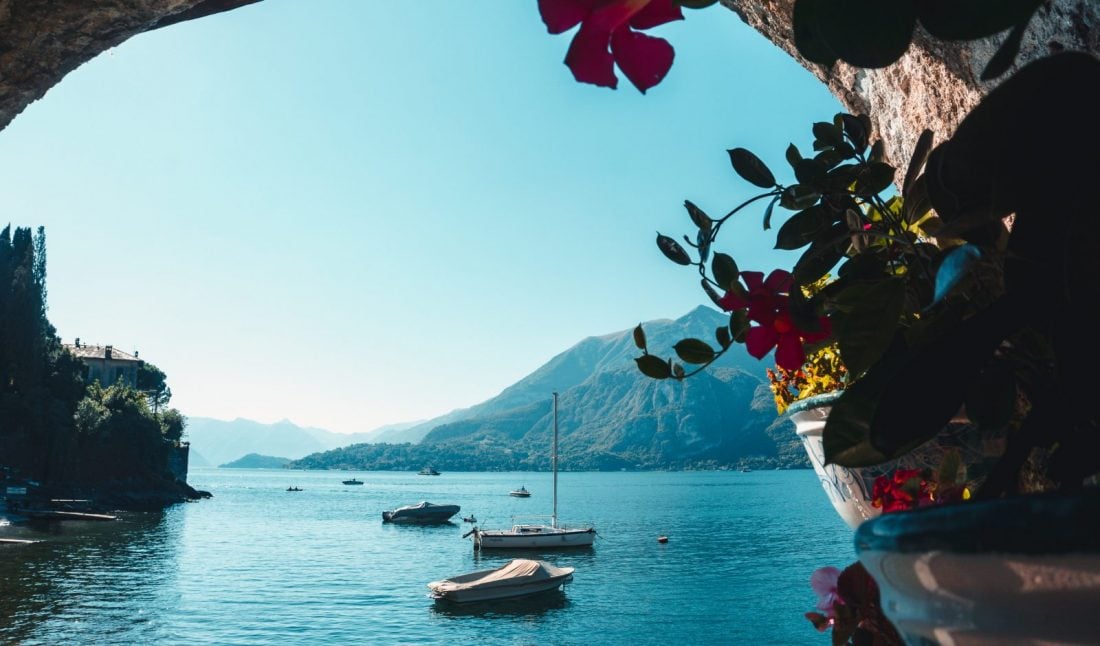
When you think of Lake Como what idyllic images does your mind conjure? Pristine blue waters, flower-adorned villas, visions of the rich and famous gliding along the water in private boats? George Clooney, maybe? Although Lake Como does have a reputation as NOT a very budget-friendly travel destination, it’s definitely possible to do on a budget and it’ll be totally worth it.
Lake Como is the deepest of Italy’s lakes and is located in Lombardy 40km north of Milan. Characterized by an old-money charm and a romantic ambiance that attracts lovers from all over the world, Lake Como is one of the most breathtakingly beautiful and best places to visit in Italy. With its mysterious charm, an abundance of splendid Victorian gardens, a rich historical legacy, and the added bonus of potentially catching a glimpse of George Clooney (don’t count on it) – it’s no wonder why Lake Como is one of the most popular summer destinations for tourists.
The shores of Lake Como are dotted with many picturesque towns composed of winding streets lined with boutique shops, historical monuments, and waterfront restaurants with lakefront views that your camera will love. If you’re planning a visit to Lake Como then there are some villages you simply can’t miss.
The sleepy fishing village of Varenna is on the train route to Milan, where you can hike up to Vezio Castle for unforgettable views or explore the gardens of Villa Monastero. Bellagio is the most popular spot on Lake Como, and despite its pricey boutiques and restaurants, it still maintains a unique charm; be sure to visit the gardens at Villa Serbelloni or Villa Melzi.
The lake’s principal town of Como is another great base to explore the area from and features a 15th-century cathedral and lakeside promenade perfect for an evening stroll in the last of the sun.
Getting to Lake Como
Lake Como is easily reachable by train from Milan, services run frequently and the train stops at Varenna. An alternative route is to take the train from Milan to Como, but it takes longer. Once you’re there, it’s ideal to rent a car or scooter in order to explore the different towns around the lake. If you’re not in the position to do so, there are frequent ferry services between the main points of interest.
Where to stay in Lake Como – Ostello Bello Lake Como
Ostello Bello is a household name in the Italian accommodation game, and their Lake Como site doesn’t disappoint! Located right in front of the sparkling blue waters of Lake Como, Ostello Bello offers stylish, modern, and comfortable dorm rooms at affordable prices. Guests can enjoy a buffet breakfast every morning, relax in the garden terrace area, or socialize with fellow guests in the on-site bar. If you’re a solo traveler to Como, or just want to save a few dollars with hostel accommodation, then you can’t go wrong with Ostello Bello Lake Como.
Lago di Garda (Lake Garda)
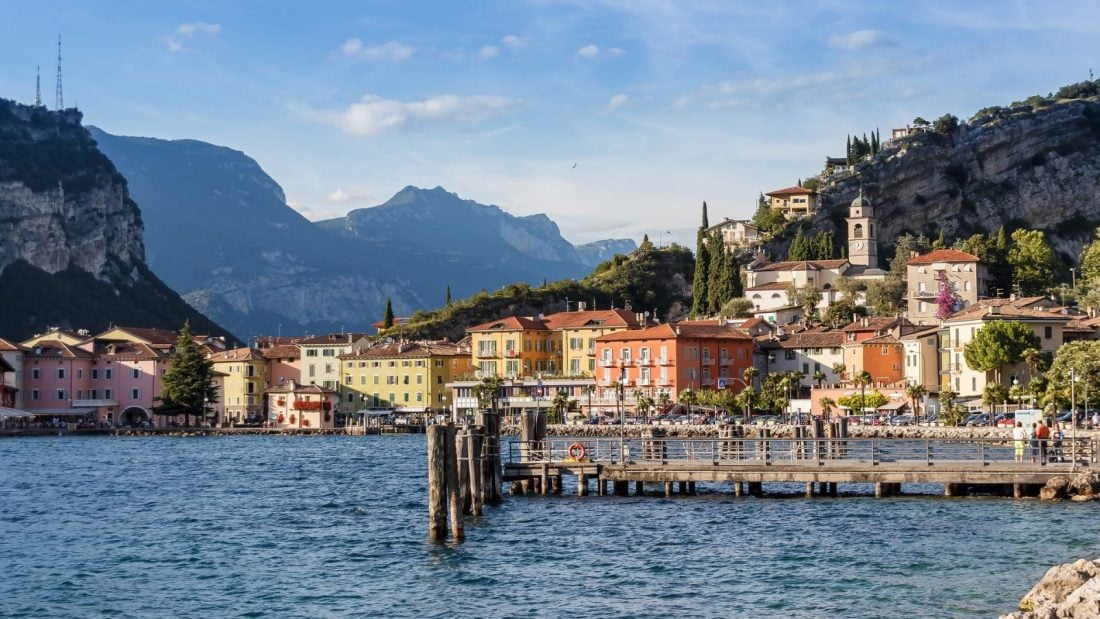
Ah, Lake Garda. The shores of Lake Garda touch three distinct regions of Italy – Lombardy, Trentino Alto-Adige, and Veneto. The expansive lake is one of the most popular tourist spots in all of Italy, and for good reason. Known for its crystal clear water and its outstanding cultural heritage, the region is one of the best places to visit in Italy whether you’re after a relaxing getaway or an adventure fuelled holiday.
To the south of Lake Garda lies the charming town of Sirmione, which during the summer months crawls with tourists from all corners of the globe. Sirmione’s winding streets and lakeside promenades are lined with international restaurants, artisan shops, and gelaterias with never-ending queues outside their doors. Explore the Rocca Scaligera, Sirmione’s lakeside fortress that offers stunning views all around. Venture to the Grotte di Catullo and get lost among the archaeological site’s ancient ruins and Roman villa. The famous poet D’Annunzio hailed from the Garda town of Gardone Riviera, where you can visit his birthplace. Riva del Garda in the north is framed by the stunning peaks of the Dolomites and is one of the most beautiful towns on the lake.
Life on Lake Garda isn’t all sunbathing, shopping, and gelato eating though. There are plenty of hiking trails around the lake that’ll lead you to panoramic views where you can see where the lake begins and ends. Monte Baldo offers a great day out, hike up or take the funicular to the top and enjoy the endless views from the flat at the top.
Getting to Lake Garda
Reaching Lake Garda isn’t difficult. Peschiera del Garda is just a short train ride from Verona. Once you’re there, buses and ferry services operate to connect various towns around the lake.
Where to stay on Lake Garda – Le Ali Del Frassino
Located in Peschiera del Garda, one of the main tourist spots on the shores of Lake Garda, Le Ali Del Frassino is a luxury hotel that features an outdoor pool and spa and wellness center. Private rooms at this Lake Garda hotel are spacious and bright, with wide windows and lake views. Le Ali Del Frassino boasts 2 restaurants, 2 bars, a fitness center, and a sauna. If you want to indulge in some luxury during your visit to Lake Garda, then Le Ali Del Frassino is the perfect accommodation choice.
Verona
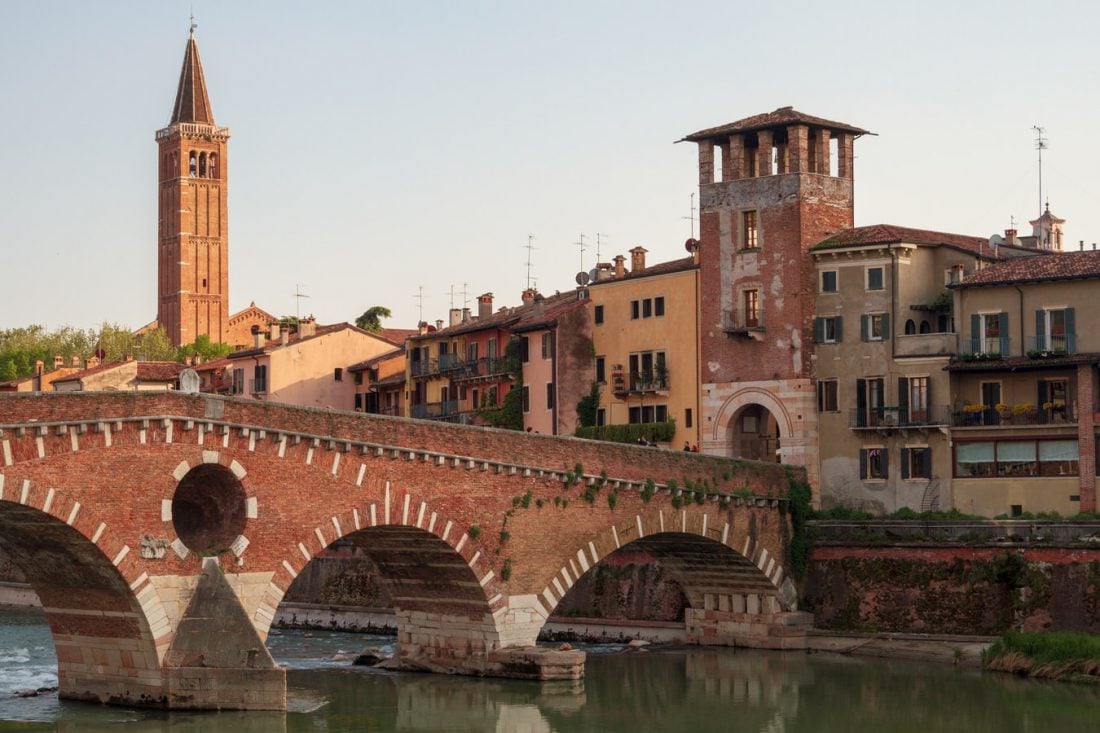
“Two households, both alike in dignity, In fair Verona, where we lay our scene, From ancient grudge break to new mutiny, Where civil blood makes civil hands unclean.”
The reality of life in Verona is a far cry from the one Shakespeare described in his classic play Romeo and Juliet, but the city is still an ideal spot for star-crossed lovers. Verona is a spectacular maze of cobbled streets and Renaissance architecture. Just a short hop from the glistening shores of Lake Garda, Verona is one of the best places to visit in Italy without the hoards of tourists that larger cities such as Florence or Venice attract.
At the heart of the city lies the gigantic Arena, an incredibly well-preserved 1st-century amphitheater that some say is more impressive than Rome’s Colosseum! If you’re lucky enough to see a show inside, you’re guaranteed to have a unique experience you’ll never forget: watching the opera or ballet under the starry night sky.
Dotted throughout the city are countless churches, museums, and parks to explore. Climb to the top of Torre dei Lamberti and take in the details of the city below. Wander through market squares, get lost in the labyrinth of streets, and amble along the banks of the River Adige at night – you’ll soon fall in love with Verona too, you’ll see.
Getting to Verona
Verona’s Porta Nuova central station connects to various other cities and towns throughout Italy, with fast trains and slow trains running throughout the day. Verona Porto Vescova is where to head if you plan to reach Lake Garda as your next stop.
Where to Stay in Verona – Hotel Colomba d’Oro
Located in the historical center of Verona, Hotel Colomba d’Oro is a stunning luxury hotel that offers sound-proofed private rooms with marble bathrooms. Rooms are air-conditioned and feature classic decor, and guests can indulge in a buffet breakfast each morning.
Val Camonica (Province of Brescia)
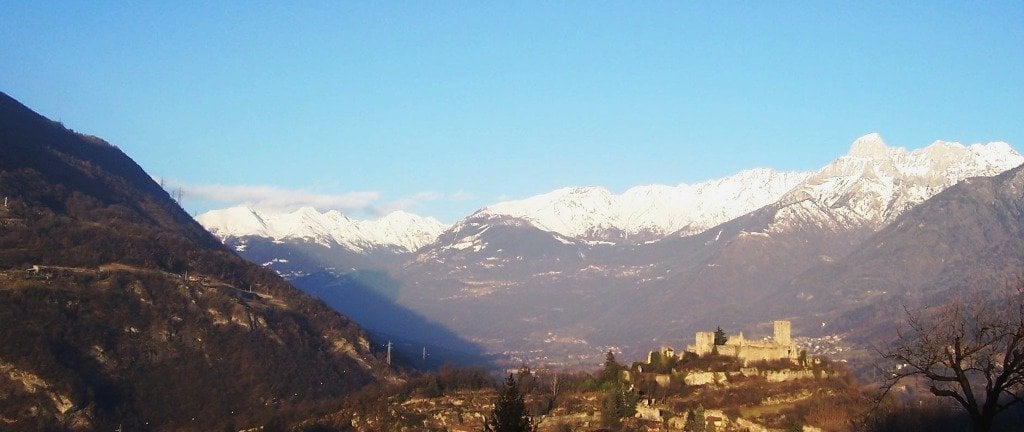
Okay, so it’s not one of the most talked-about areas in northern Italy, and chances are that you’ve never heard of it, but Val Camonica is an alpine region awash with natural beauty that deserves a lot more credit than it gets. The fact that Val Camonica hasn’t made it onto the Italian tourist maps yet means that it’s quiet, peaceful, and not buzzing with tourists – so shhh, keep it to yourself.
Located in the east of Italy’s Lombardy region, in the province of Brescia, Val Camonica is one of the largest valleys in the central Alps. Bounded on the south by the glimmering waters of Lago d’Iseo, and intersected by the river Oglio all the way to Ponte di Legno – Val Camonica’s diverse terrain and captivating culture make it one of the best places to visit in Italy for nature enthusiasts, adventure junkies, and history fanatics.
The picturesque valley is known for its archaeological, historical, and natural significance, and boasts breathtaking panoramic views of the Alps, as well as an abundance of natural flora and fauna unique to the area.
In the Stelvio Nature Park, you can find remarkable animals such as chamois, ibexes, foxes, marmots, and even golden eagles. If you visit during the warmer months of the year, Val Camonica is home to hundreds of hiking and biking trails that’ll leave your calf muscles feeling the burn – in a “good kind of pain” way.
If you decide to visit the region when it’s covered in a pristine blanket of snow then you’ll understand why Val Camonica is a haven for skiers and alpine sports enthusiasts; with the ski fields of Ponte di Legno claiming some of the best slopes in the area.
Val Camonica was the first place in Italy to be awarded status as a UNESCO World Heritage site in 1979 due to the abundance of ancient rock carvings that have been found here. Over 300,000 petroglyphs have survived since the ancient Camuni or Camunni peoples carved them into the unsuspecting rock faces thousands of years ago. They’re recognized as some of the most complex and impressive rock drawings in Europe, often depicting animals such as deer, elk, and dogs. The art can be found in plenty of locations throughout the valley, including Capo di Ponte, Nadro, Cimbergo, Paspardo, and Darfo Boario Terme.
If we’ve managed to convince you to add Val Camonica to your list of places to visit in northern Italy, then there are a few places you really can’t miss. Be sure to include a dip in the thermal baths of Boario Terme, the perfect place to relax after a day of exploring.
Don’t skip out on a visit to the breathtaking towns of Breno with its hilltop castle and Bienno with its charming medieval streets. If you’ve still got some time left then a visit to Lake Iseo’s island mountain (Monte Isola) is the perfect way to finish your Val Camonica adventure.
The best way to explore the area is by car, so you can enjoy the freedom to visit the mountainside monasteries, hidden lakes, and charming traditional towns as you please.
Where to Stay in Val Camonica (Province of Brescia) – Hotel Brescia
Val Camonica offers plenty of accommodation options to cater to visitors, whether you’re seeking luxury or budget accommodation you’re guaranteed to find a charming alpine lodge or a spa-themed hotel in these areas. Hotel Brescia is our suggestion, as it is located 100 meters from the Boario Terme thermal baths – a prime location for exploring the valley. The hotel offers comfortable and affordable private rooms, an alpine-style restaurant where you try regional dishes, and an outdoor pool for the summer months.
Conegliano and Valdobbiadene (Province of Treviso)
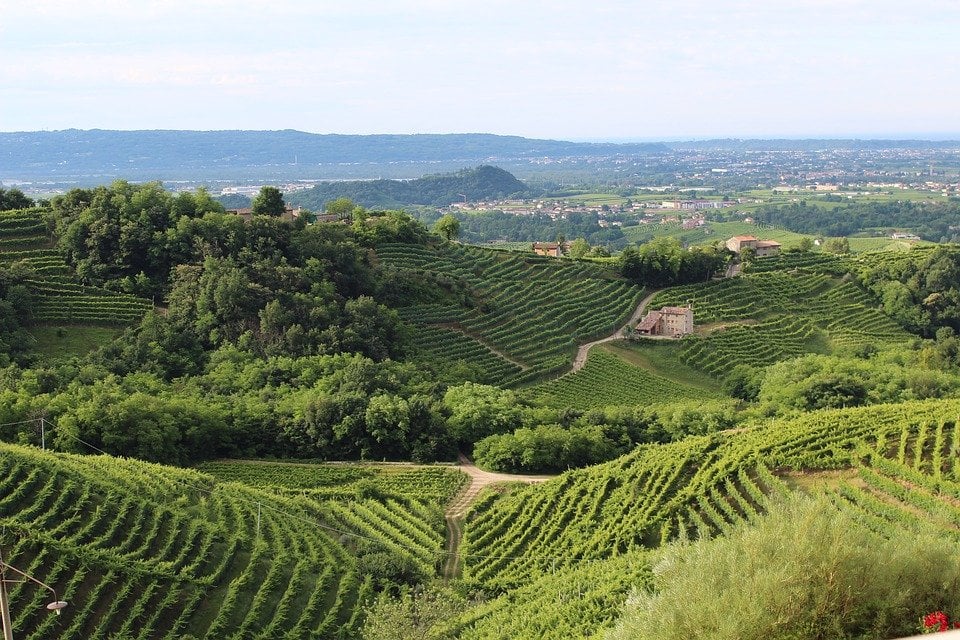
Recently deemed a UNESCO World Heritage site, Italy’s top Prosecco producing region is an area of undiscovered outstanding beauty. An hour north of Venice in the province of Treviso lies the charming city of Conegliano which is famous for being the birthplace of 15th-century artist Giambattista Cima. This humble city boasts a population of just 36000 people and its main attraction is its small hilltop castle that surveys the hilly region. Conegliano is a main point of call for visitors embarking on a tour of the Strada del Prosecco (Prosecco Road).
The road winds through the vineyard-covered hills of Veneto. If you’ve got a penchant for the delicious sparkling white wine drink – then this is one of the best places to visit in Italy that you simply can’t miss.
The best way to explore the region is by renting a car or joining a tour that will take you through the panoramic hills, ending in the historic town of Valdobbiadene. Along the way, you’ll encounter medieval churches, magnificent castles, and idyllic vineyards that will give you a taste for the authentic Italian way of life. During the summer months, the small-town inhabitants come together to celebrate in unique Italian fashion, with outdoor Prosecco and wine tastings, festivals, and plenty of regionally inspired food.
In Valdobbiadene, you’ll be spoilt for choice with cantinas and elegant restaurants where you can sit back and relax with a glass of prosecco while you watch the sun setting over vineyards that extend as far as the eye can see. If you want to see the countryside, enjoy the silence, and stray far from the typical Italy tourist trails – then the Strada del Prosecco will provide you with an unforgettable experience at the foot of the Dolomites.
Getting There
Although it might not be the most accessible part of Italy, Conegliano is well connected to bigger cities such as Venice and Verona. The panoramic views along the Strada del Prosecco are best explored by car.
Where to stay along the Strada del Prosecco – Le Zitelle di Ron
Located in the heart of Valdobbiadene, Le Zitelle di Ron offers cozy accommodation nestled among endless vineyards. Guests can enjoy breakfast with a view every morning as well as rent bicycles free of charge.
As you can see Northern Italy is filled with amazing sights to see and places to visit. So hurry up and start exploring! As always happy travels, and we’ll see you on the road!
Like This Article? Pin It!

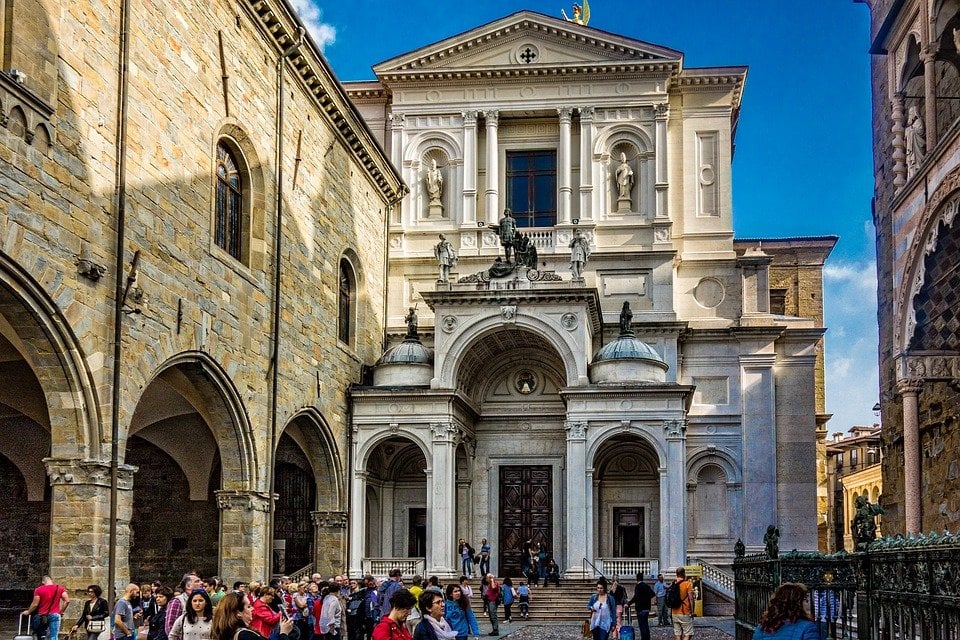
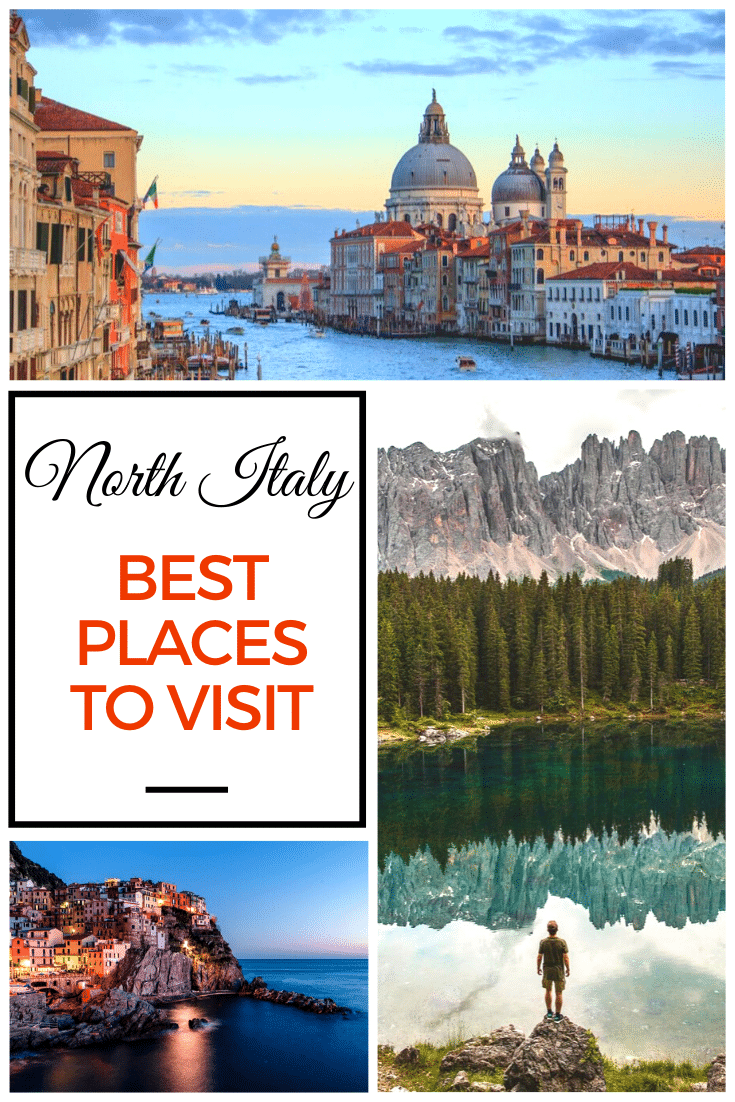
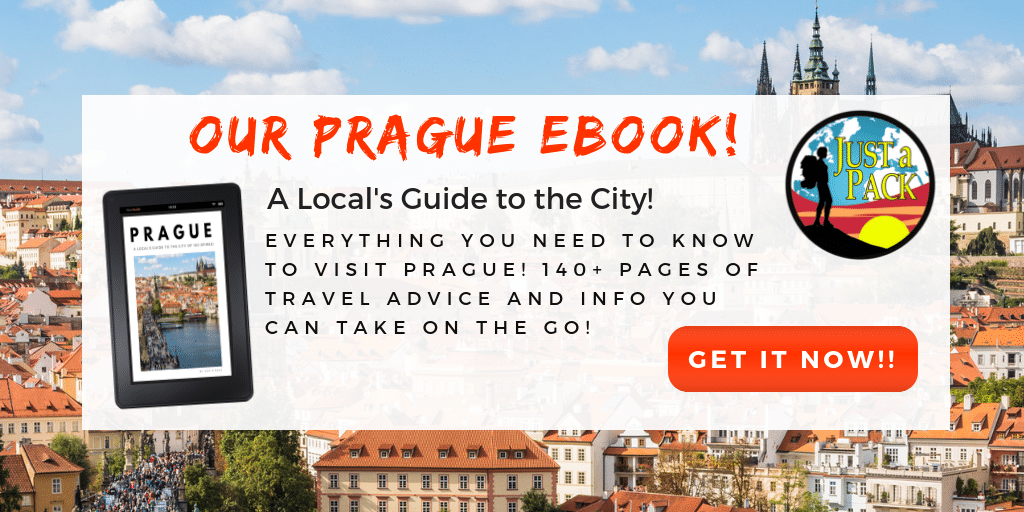

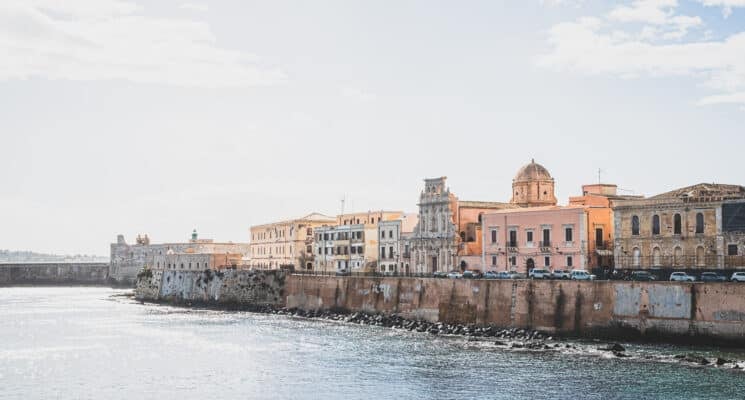
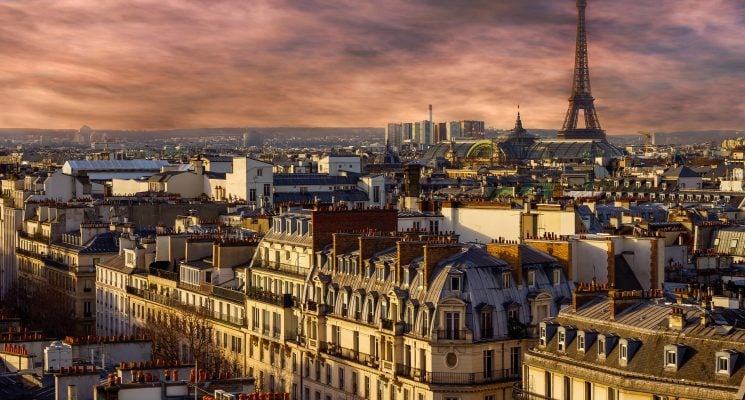
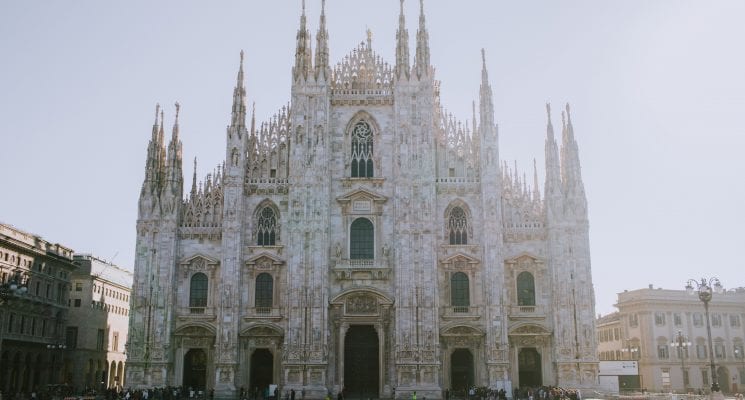
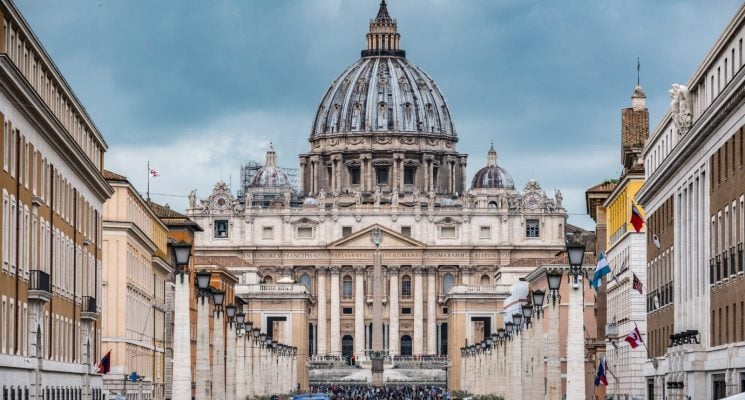
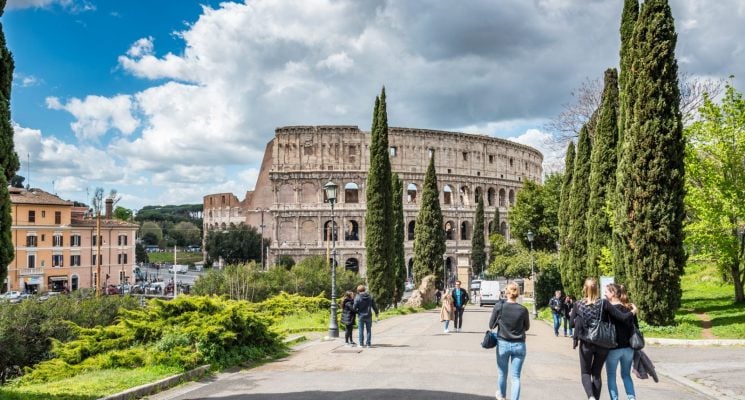
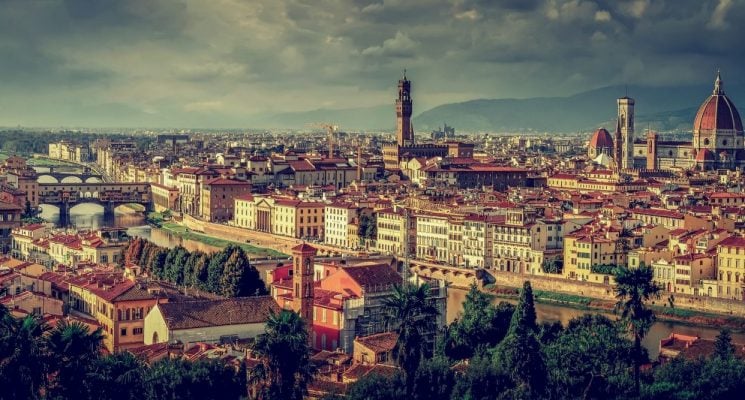
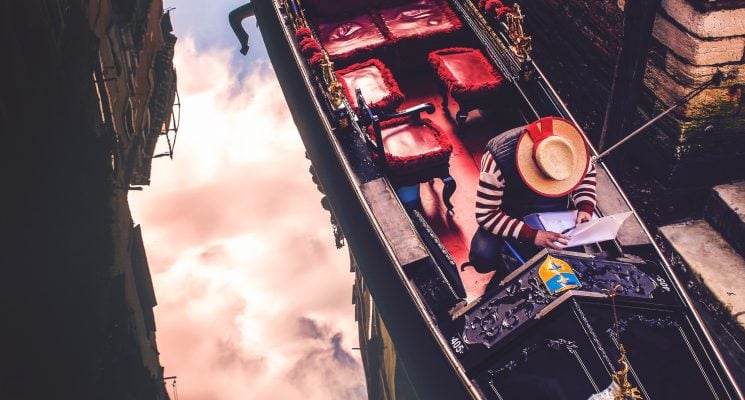
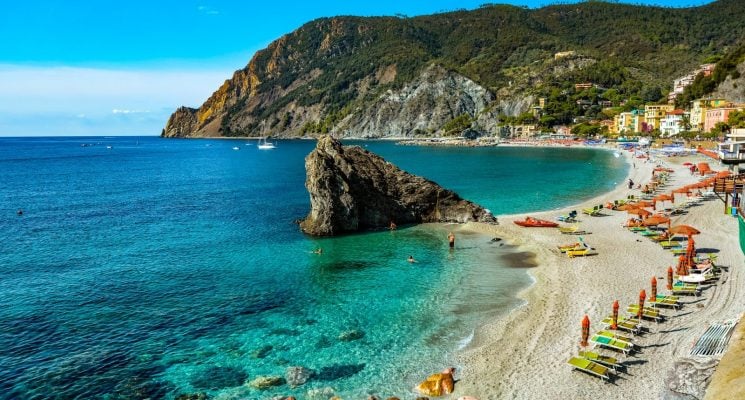
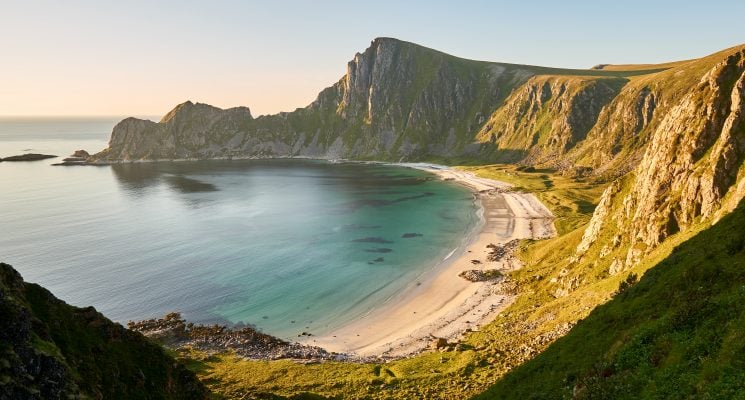
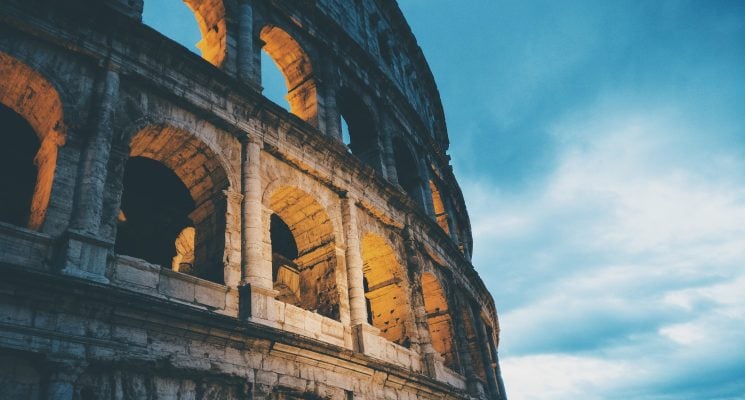
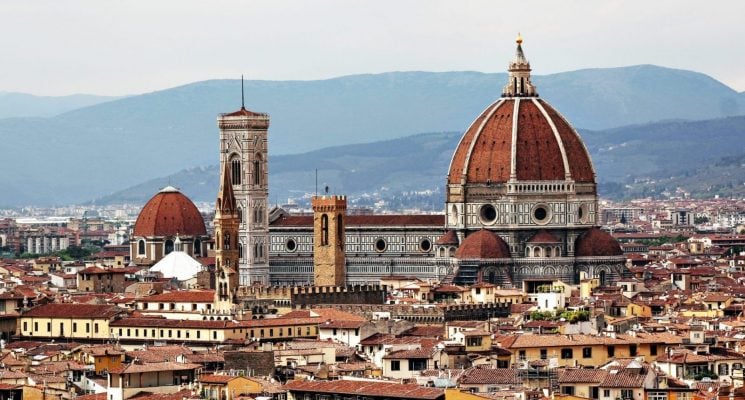
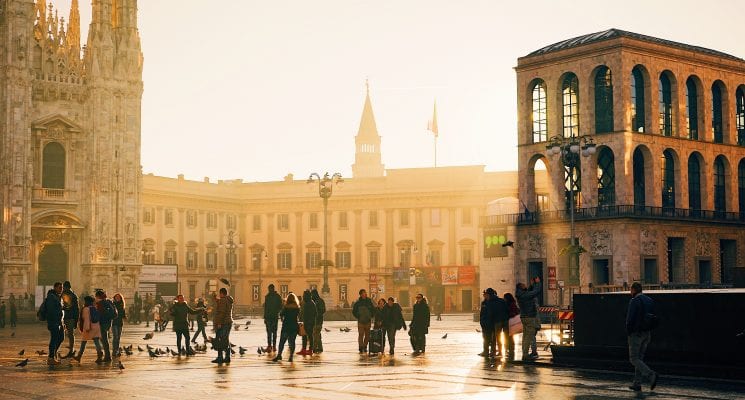
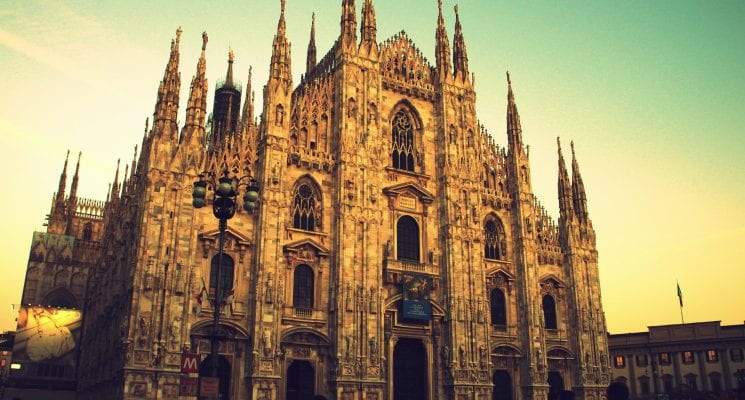
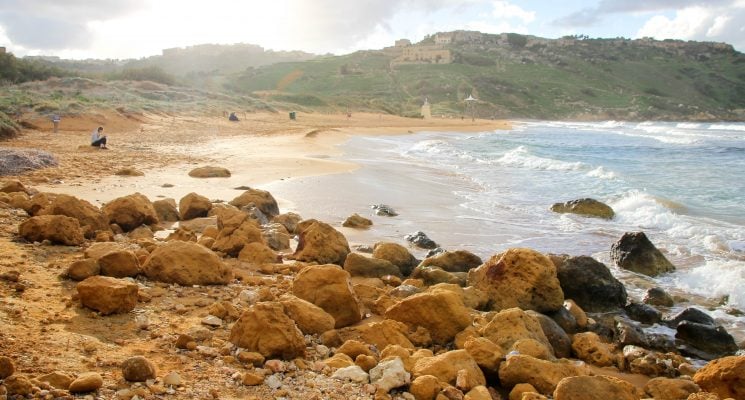
Comments